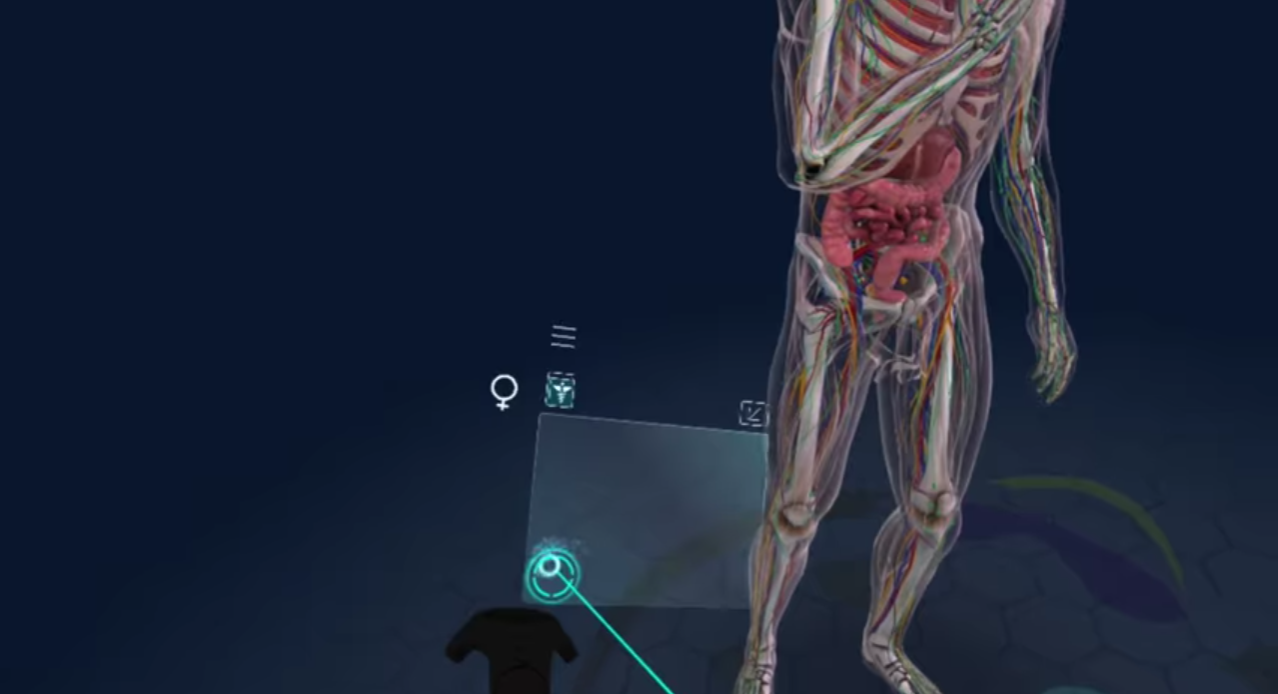Last week we reported that personal health company Sharecare was making a move into VR by acquiring BioLucid, a studio that creates digital health visualization products. Now operating as the Sharecare Reality Lab, the team is working on an intriguing piece of VR software named YOU VR.
YOU VR is one of the most promising examples we’ve seen of health-based VR yet. Rather than a simple tour of the body as you’ll find in the likes of The Body VR, this software is designed to help both patients and doctors better understand the diseases and conditions they may be dealing with. Using the HTC Vive the app can visualize the causes and effects of illnesses. Imagine watching the effects of an artery clogging up, for example, or getting an in-depth explanation of what’s really happening to you when someone tells you you have a certain type of cancer.
It’s a fascinating concept that holds potential to revolutionize the way we look at our health, but it’s not a new idea. In fact, BioLucid co-founder Jeff Hazelton first envisioned it two decades ago.
“Just over 20 years ago, after seeing some computer animation and reading about the promise of VR, I made the decision not to attend med school and become a doctor,” he tells me over email. “It occurred to me that, instead, I could combine my interests in medicine and health psychology with my passion for art and technology.”
From those thoughts, BioLucid was born. Consumer-level VR hasn’t been around for anything like 20 years, and before its arrival the company has had plenty of practice making medical animations for trade shows and exploring its ideas on 2D formats.
“As our work progressed, we started to uncover the needs of the medical community, and began building capabilities around the biggest unmet needs we identified,” Hazelton explains.
The benefit being that YOU VR should be a platform that’s already catering to the needs of both doctors and patients, not discovering them as development continues. Actually transitioning that work from screens to VR has been “pretty seamless”, according to Hazelton.
“From the very first real-time rendered simulations we created, VR has always been in the back of our minds,” he says. “We have a pretty fantastic art team and our art director is a perfectionist with a high visual bar, so we typically translate all our work into VR. We also have a very capable and creative group of engineers that have a similar mandate.”
One of the biggest features that VR adds to the platform is position-tracked controls via the Vive’s wands. It is this element that allows YOU VR to “really shine” in Hazelton’s words. It gives the user the ability to more deeply interact with the living anatomy and physiology of the body, while roomscale support lets them explore it in great detail. Hazelton puts it best: “instead of our organs being inside of us, we get to be inside of our organs.”
But how can we expect to actually utilize the platform? Will it simply be a case of slipping on a Vive in a doctor’s surgery? There may have been a time when that was the plan, but the Sharecare acquisition allows the team to expand its ambitions. Starting “early next year”, Sharecare Reality Lab will roll out apps serving various functions. Hazelton explains that educators will be able to license the platform to teach students, pharmaceutical and medical device marketers will be able to use it to create “custom materials, and sponsor existing information”.
He also talks about using the platform to create empathy among others by letting them see what patients are going through, while also helping the patients themselves recover better thanks to being more informed.
“By combining real-time simulation of the human body with 360-degree video and augmented reality, we can help patients and providers better understand what each is experiencing during life’s most vulnerable moments,” Hazelton says.
Reality Lab is clearly very proud of YOU VR, but work isn’t done. I asked if the platform might support individual patient data so that, through scans and diagnoses, they could see exactly what was going on inside their body. Hazelton says the team is “eagerly awaiting” that idea and the industry is “getting very close”, though it will require standardization of scanned medical data and hardware across the board to become widespread.
“We currently are working on a high profile VR project that factors in individual health data from scans that will be released in the coming months,” he teases. “That’s all I can say right now, except that we’re very excited to begin this next chapter of innovation.”






























